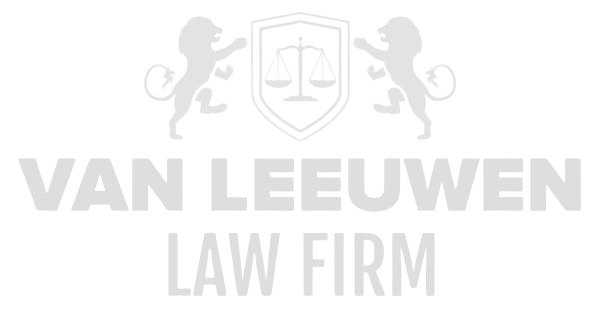Maintaining relationships with Data Protection Authorities (DPAs) requires a deeply embedded compliance culture and thoughtful procedures to ensure that investigations proceed smoothly and within legal timeframes. Once a DPA initiates a formal investigation, organizations are expected to submit all relevant documentation—such as records of processing activities, DPIAs, data breach reports, and internal audit results—without unnecessary delay. Transparency is crucial in this process: by providing timely, complete, and accurate information, misunderstandings can be avoided, and trust can be built, even in the face of potential sanctions. Strategic escalation matrices determine who contacts the supervisory authority at each stage, with both legal and technical experts available to respond to inquiries directly and provide additional evidence.
Proactive engagement with DPAs goes beyond occasional reactive reporting; it includes periodic meetings, consultations on new processing projects, and participation in industry forums that develop guidelines. By demonstrating from the outset that privacy and security risks are systematically managed, an organization can position itself as a trusted partner in personal data protection. In cases where allegations of financial mismanagement or sanction violations coincide with DPA investigations, a strong DPA relationship acts as a buffer: joint crisis exercises and mock audits strengthen both operational readiness and institutional resilience against reputational damage.
(a) Regulatory Challenges
Organizations face various national and European interpretations of the GDPR, with DPAs potentially holding differing views on information obligations and penalty assessments. Concepts like “unreasonable delay” and “full cooperation” are not strictly defined, requiring organizations to conduct detailed legal analyses to establish the scope of their reporting obligations. This requires legal teams to perform file reviews based on case law from national courts and advice from the EDPB, to provide guidance on aligning responses with varying DPA interpretations.
Navigating sector-specific supplements—such as guidelines for healthcare, financial services, or telecommunications—adds further complexity. DPAs may base their investigations on these additional regulations to impose stricter requirements in those sectors. Therefore, organizations need to maintain comprehensive compliance matrices that integrate both general GDPR requirements and sector-specific provisions, so that it is immediately clear which additional standards apply to specific processing activities during a DPA investigation.
Evidence related to international data transfers plays a crucial role when DPAs seek insight into transfers to third countries. Adequacy decisions, model contract clauses, and binding corporate rules must not only be present contractually, but also demonstrably implemented in production environments both technically and organizationally. The legal challenge is to adjust when adequacy decisions change or news emerges about unlawful surveillance in destination countries, without disrupting critical international services due to transfers to third countries.
The powers of DPAs to conduct on-site inspections or demand forensic data vary by member state. Organizations must develop protocols for receiving and facilitating DPA audits, including agreements on access to systems, confidential information, and witnesses. Legal teams draft binding agreements with DPAs to ensure that management and external stakeholders trust that inspections are professional, proportionate, and within the correct scope.
Finally, anticipating future regulations on data breach notifications and topics like AI applications requires organizations to proactively engage in consultations with DPAs through formal instruments such as advisory sessions and public consultations. This mechanism allows organizations to receive early feedback on new processing initiatives and refine legal frameworks before large-scale investigations or sanctions become imminent.
(b) Operational Challenges
Operational management of DPA investigations begins with a standardized governance framework where notification, triage, and assignment of DPA requests are automated. Centralizing incoming correspondence—via email, letter, and portal—into a case management system enables organizations to tag each request by priority, responsible officer, and required action items. Operational teams are then trained on playbooks that cover specific DPA scenarios, from requests for internal procedures to technical forensic logs.
Simultaneously, cross-functional incident response teams must be activated. Security engineers collect system logs, IT architects provide network topologies, legal advisors validate contract clauses, and compliance specialists fill out questionnaires. To ensure timely responses, templates for common standard DPA questions—such as data flow diagrams and DPIA results—are developed in advance, requiring only contextual adjustments.
Ensuring knowledge of previous DPA investigations is essential for operational efficiency. Post-mortem records and lessons-learned sessions lead to updates in playbooks and workflow automations. This way, for a new request based on similar case law, the most relevant documentation and subsequently corrected procedures can be shared immediately, without reinventing the wheel.
For actual on-site or remote DPA audits, operational protocols must describe which environments are to be opened, which data extraction methods are accepted, and how chain partners (such as processors) are involved. This requires temporarily adjusting access controls to systems and lifting logical segmentation under strict oversight conditions, after which access must be restored to “least privilege” immediately following the audit.
Continuous training of all involved operational teams—from helpdesk to the CISO office—is essential. Through tabletop exercises, scenarios are practiced, including questions on data residency, overdue DPIA notifications, or reporting of cross-border data flows, so that no valuable time is lost with unprepared actions during the actual investigation.
(c) Analytical Challenges
Requests from Data Protection Authorities (DPAs) often involve the need for in-depth analysis of data flows and data processes. Data analysts must use automated lineage tools to visualize which datasets flow through which systems, what transformations occur, and which subprocessors have had access. Advanced metadata repositories allow for the generation of a comprehensive overview within minutes, but they require data scientists and stewards to have consistently implemented schemas, tags, and data classifications in advance.
Additionally, DPAs sometimes request statistical summaries—such as the number of processing requests, data breach notifications, and response rates—over a specific period. Actuarial data models can help predict trends and assist with capacity planning for upcoming notifications. Operational dashboards combine these statistics with performance metrics, so management knows when additional resources need to be deployed.
More complex DPA investigations require forensic analysis tools that can search through log files, packet captures, and cloud audit trails for specific indicators. Data engineers need to set up flexible querying and correlation mechanisms, for example, by enriching SIEM data with business context through machine learning algorithms that recognize patterns in irregular access logs.
Validating analytical findings requires manual sampling and cross-checking of results against source material. Data governance teams conduct periodic control tests, in which analytical scripts and models are tested for accuracy and completeness, ensuring that the data presented during DPA inspections is irrefutable.
Finally, analytical output processes must be fully auditable. Every step of data extraction, transformation, and visualization is recorded in metadata so that during an audit, the entire analysis can be reproduced. This strengthens the credibility of reports with DPAs and internal governance committees.
(d) Strategic Challenges
At the strategic level, dealing with DPAs must be embedded within the top structure of the organization, with direct reporting lines from Data Protection Officers (DPOs) and compliance officers to the Board of Directors. Strategic planning focuses on anticipating DPA trends—such as capacity expansion of authorities or a focus on specific sectors—so that proactive measures can be taken before request volumes become unmanageable.
A long-term strategy includes investments in regtech and reporting tools that streamline DPA interactions. Through AI-driven document analysis, incoming letters can automatically be classified, and proposed response templates can be generated, allowing legal teams to focus on more complex interpretations rather than administrative tasks.
Building trust frameworks with DPAs can contribute to a preferred position for urgent requests or pilot projects. Participation in public consultations and sharing best practices positions the organization as a thought leader, which can result in shorter investigation timelines and even policy influence in the development of new guidelines.
Strategic partnerships with industry organizations and peer coalitions strengthen the collective voice in DPA discussions. Joint lobbying efforts can lead to more consistent interpretations and less divergence between national DPAs, which is crucial for multinationals to achieve uniform compliance implementations.
Finally, strategic governance requires a culture of continuous improvement: lessons learned from DPA investigations, penalty proceedings, and judicial rulings should flow back into policies, tools, and training. Establishing a cross-functional “DPA Readiness Council” promotes knowledge sharing, accelerates decision-making, and keeps the organization agile in a changing external regulatory landscape.









